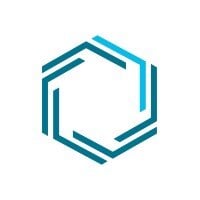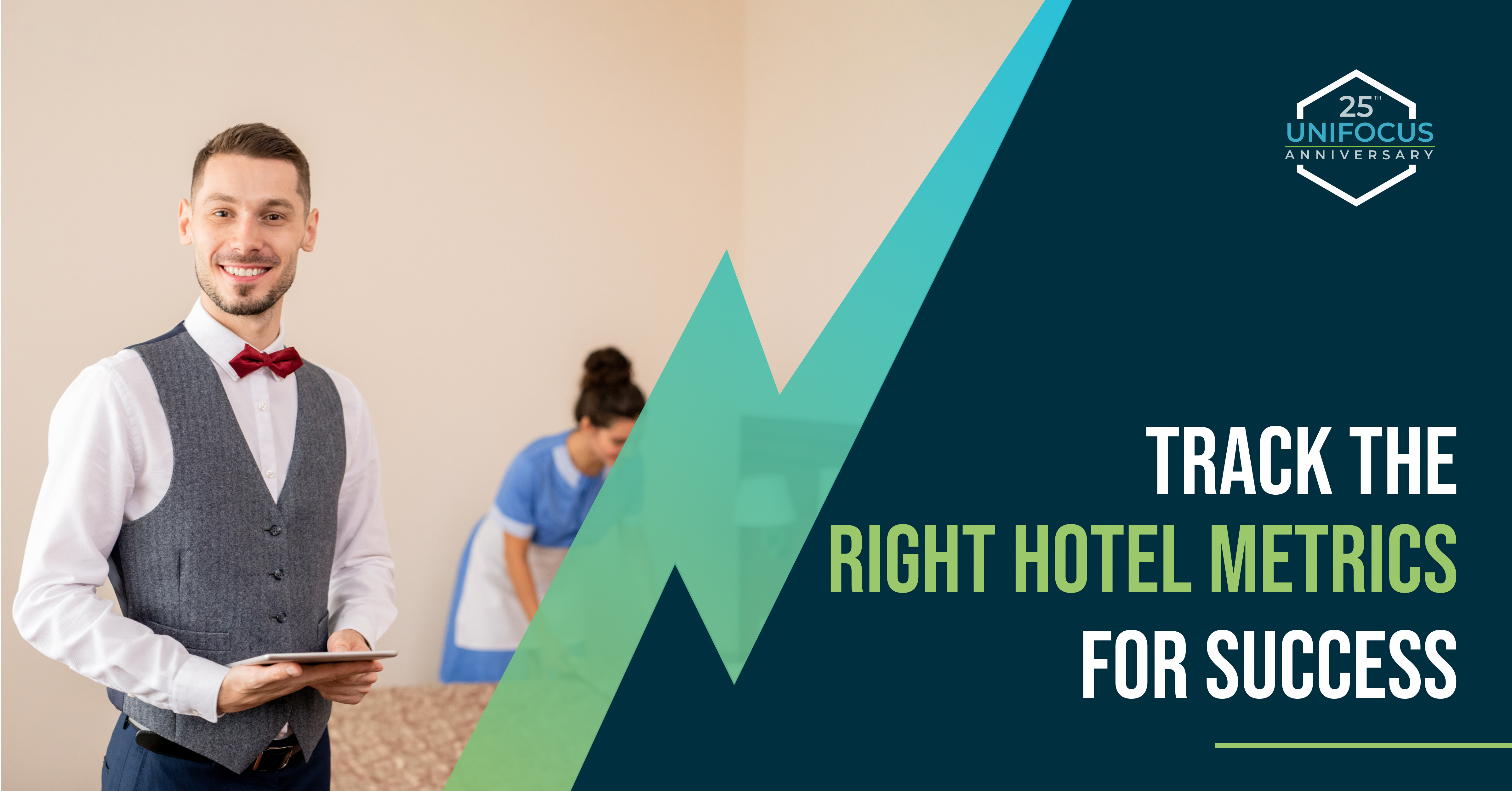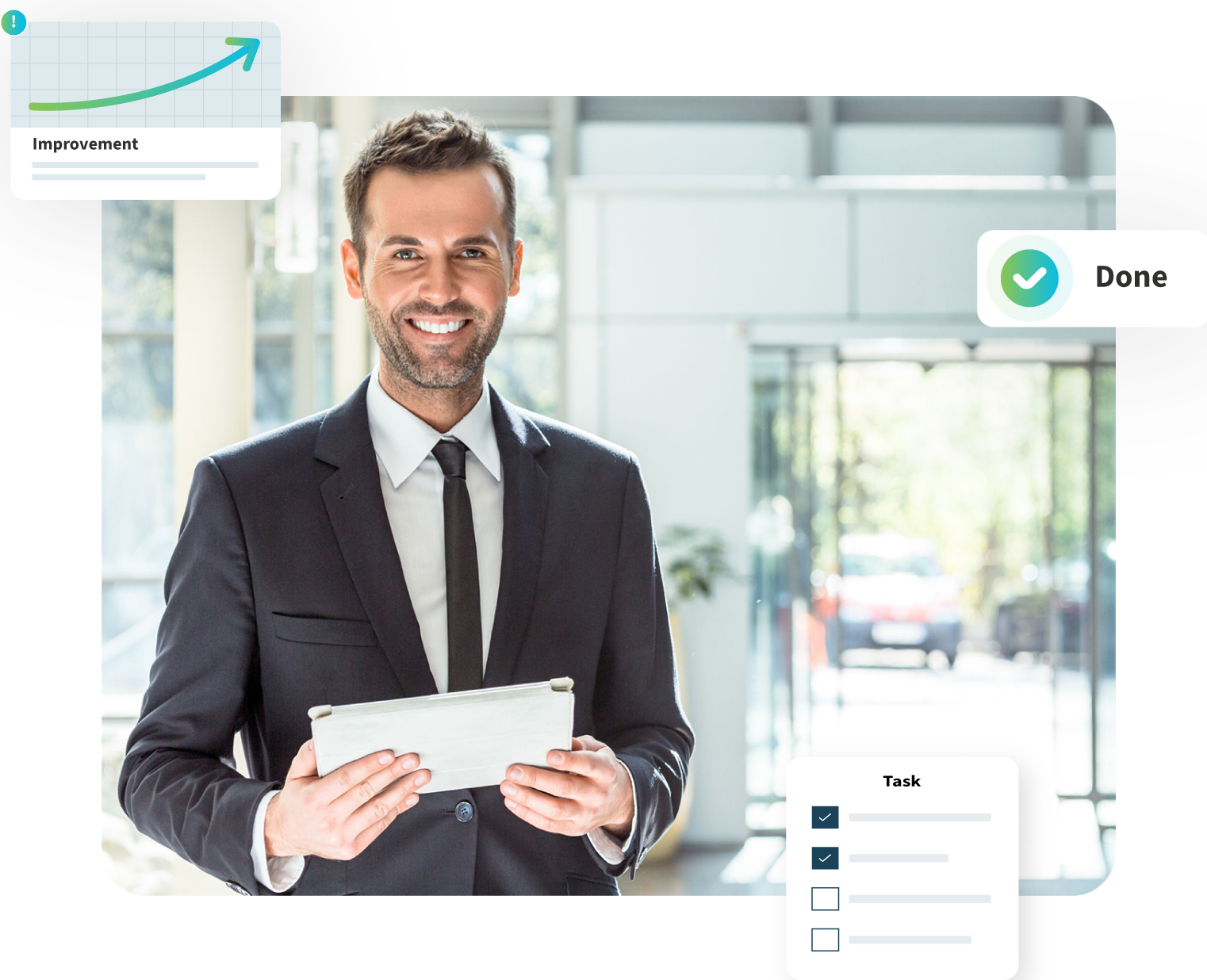Running a successful hotel involves more than just filling rooms and providing great service. It requires a keen eye on the right metrics that drive performance, profitability, and guest satisfaction. With so many data points available, it can be overwhelming to determine which ones truly matter. Are you watching the right hotel metrics? In this article, we’ll dive into the essential metrics that every hotel manager should track to ensure operational excellence and sustained success. From occupancy rates to guest satisfaction scores, and employee productivity to revenue per available room, we’ll explore how these key metrics can provide insights, guide decision-making, and help you stay ahead in the competitive hospitality industry. Let’s take a closer look at how you can harness the power of data to optimize your hotel’s performance.
Essential KPIs for Hotel Operations
Occupancy Rate
Occupancy rate is a fundamental metric that reveals more than just room demand—it’s a lens into market dynamics, guest behavior, and operational efficiency. High occupancy is often seen as a success marker, but the true value lies in the nuances of how this rate is achieved and sustained.
Read more...
-
Segmentation Analysis: Dissecting occupancy by segment (leisure, business, group) helps identify which segments are driving demand and at what times. This allows for targeted marketing and optimized service offerings.
-
Length of Stay Patterns: Understanding the average length of stay and its variance across different segments can reveal opportunities for enhancing guest experiences and increasing ancillary revenues.
-
Booking Channels: Analyzing which channels (OTA, direct bookings, corporate accounts) contribute most to occupancy helps in refining channel strategies and reducing distribution costs.
-
Geographic Trends: Tracking the geographic origins of guests can inform marketing strategies and partnerships in specific regions to boost targeted demand.
-
Seasonality and Events: Correlating occupancy rates with local events, holidays, and seasonality can provide insights for dynamic pricing and tailored promotions.
Million Dollar Secrets:
-
Forecasting and Demand Management: Use advanced forecasting tools to predict demand fluctuations and adjust inventory and pricing strategies in real-time. This proactive approach helps in capitalizing on high-demand periods while mitigating low-demand impacts.
-
Competitive Benchmarking: Regularly benchmark occupancy rates against local and regional competitors to identify market share trends and areas for improvement.
-
Unconventional Partnerships: Forge partnerships with local businesses, airlines, and tourism boards to create exclusive packages that attract new guest segments and boost occupancy during off-peak times.
-
Personalization: Utilize CRM systems to personalize guest experiences based on past behaviors and preferences, encouraging repeat stays and word-of-mouth referrals.
Enhancement Strategies:
-
Leverage Predictive Analytics: Utilize data analytics to forecast demand accurately, allowing for dynamic adjustments in pricing and inventory management.
-
Optimize Revenue Management Systems: Implement sophisticated revenue management systems that integrate real-time data to optimize pricing strategies and maximize revenue per available room.
-
Enhance Marketing Efforts: Develop targeted marketing campaigns based on segmentation analysis and booking patterns to drive bookings during low-demand periods. Focus on personalized and experience-driven promotions to attract and retain guests.
-
Customer Feedback Integration: Actively collect and analyze guest feedback to continuously improve services and tailor experiences to meet guest expectations.
-
Technology Adoption: Implement technology solutions that streamline operations, such as mobile check-in/check-out, digital room keys, and in-room tablets for guest services, enhancing overall guest satisfaction.
-
Staff Training: Regularly train staff on hospitality best practices and the latest technology to ensure high service standards and operational efficiency.
Average Daily Rate (ADR)
ADR is a direct reflection of a hotel’s pricing strategy and market positioning. It indicates the revenue potential per room and helps in evaluating the effectiveness of pricing tactics.
Read more...
-
Rate Parity and Distribution: Ensuring rate parity across all distribution channels can prevent price dilution and maintain brand integrity. Monitoring and managing rate parity can also reveal discrepancies that might undermine pricing strategies.
-
Market Segmentation: Tailoring ADR strategies based on market segmentation can maximize revenue. For instance, offering premium rates for corporate clients during weekdays and promotional rates for leisure travelers on weekends can optimize room revenue.
-
Competitive Positioning: Regularly comparing ADR with competitors in the same market can provide insights into pricing power and market positioning. Understanding why a competitor might achieve a higher ADR can inform adjustments in services and amenities.
-
Value-Added Services: Enhancing ADR isn't just about increasing room rates; it's about offering value-added services that justify higher rates. This includes offering bundled packages, premium amenities, and exclusive experiences.
-
Length of Stay Discounts: Strategically offering discounts for extended stays can increase occupancy while maintaining a higher overall ADR. This approach can smooth occupancy fluctuations and improve guest satisfaction.
-
Seasonal and Event-Based Pricing: Adjusting rates based on local events, holidays, and seasons can capture additional revenue. Implementing dynamic pricing models that react in real-time to demand changes can optimize ADR.
Revenue Per Available Room (RevPAR)
RevPAR provides a holistic view of revenue management by combining both occupancy and ADR. It is a critical indicator of a hotel’s ability to maximize revenue from its room inventory.
Read more...
-
Balancing ADR and Occupancy: A higher RevPAR isn't just about charging higher rates or filling more rooms—it’s about finding the optimal balance between the two. This balance can vary by market, season, and target demographic.
-
Length of Stay and Booking Window Analysis: Understanding how the length of stay and the booking window (the time between booking and check-in) impact RevPAR can inform better pricing and marketing strategies. Encouraging longer stays or capturing early bookings at favorable rates can enhance RevPAR.
-
Channel and Segment Analysis: Not all booking channels or market segments contribute equally to RevPAR. Identifying which channels and segments deliver the highest RevPAR allows for strategic investment in the most profitable areas.
-
Group vs. Transient Business: Analyzing the mix of group versus transient business can provide insights into how different types of bookings impact RevPAR. Groups might book at lower rates but offer guaranteed volume, while transient guests might pay higher rates.
-
Market Conditions and Competitor Actions: Regularly monitoring market conditions and competitor pricing strategies is crucial. Dynamic pricing tools that adjust rates in real-time based on market conditions can optimize RevPAR.
-
Upselling and Cross-Selling: Increasing RevPAR isn't solely about room rates. Upselling additional services (e.g., spa treatments, dining experiences) and cross-selling packages can significantly boost overall revenue.
-
Operational Efficiency and Cost Management: Effective labor optimization based on demand variables is critical. Aligning staffing levels with occupancy forecasts ensures that labor costs are controlled without compromising service quality.
Million Dollar Secrets:
-
Integrated Revenue Management Systems: Implement systems that integrate data from various sources (PMS, CRM, RMS) to provide a comprehensive view of revenue performance. This integration allows for more precise and dynamic adjustments to pricing and inventory management.
-
Predictive Analytics for Demand Forecasting: Use advanced analytics to forecast demand accurately and adjust strategies proactively. This includes leveraging historical data, market trends, and AI-driven models to predict future demand patterns.
-
Strategic Partnerships and Alliances: Develop strategic partnerships with local businesses, event organizers, and tourism boards to create packages that attract high-value guests during low-demand periods.
-
Advanced Labor Optimization: Utilize labor management tools that align staffing with real-time demand forecasts. This ensures that labor costs are optimized, and service levels are maintained, contributing to a healthier RevPAR.
-
Automated Rate Management: Deploy automated rate management systems that adjust pricing dynamically based on real-time data. These systems can respond instantly to changes in demand and competitor pricing, ensuring optimal rates at all times.
Enhancement Strategies:
-
Integrate Comprehensive Revenue Management Solutions: Use advanced RMS that incorporate real-time data analytics, competitor benchmarking, and dynamic pricing algorithms to optimize RevPAR.
-
Conduct Market Trend Analysis: Regularly analyze market trends to adjust strategies proactively. This includes monitoring local events, economic conditions, and seasonal patterns that impact demand.
-
Align Sales and Marketing Initiatives: Ensure that sales and marketing efforts are coordinated to drive demand strategically. This includes targeted marketing campaigns, strategic promotions, and partnerships that enhance brand visibility and attract high-value guests.
-
Enhance Digital Presence: Improve online visibility through SEO, social media engagement, and a user-friendly website. A strong digital presence can attract more direct bookings and reduce reliance on OTAs, thereby improving profitability.
-
Optimize Distribution Channels: Balance the use of OTAs, direct bookings, and other channels to ensure optimal distribution. Regularly review channel performance and make adjustments to maximize RevPAR.
-
Personalized Guest Experiences: Leverage CRM data to personalize guest experiences. Tailored offers and personalized services can command higher rates and foster guest loyalty, leading to repeat business and higher RevPAR.
-
Dynamic Pricing Strategies: Implement dynamic pricing strategies that adjust room rates in real-time based on demand fluctuations, booking patterns, and market conditions. This ensures that the hotel captures maximum revenue potential.
-
Focus on Ancillary Revenue: Develop strategies to increase ancillary revenue through services like dining, spa treatments, and activities. Effective upselling and cross-selling can significantly boost total revenue per available room.
-
Staff Training and Development: Invest in training programs that equip staff with skills in upselling, customer service, and revenue management. Well-trained staff can enhance guest satisfaction and contribute to higher RevPAR.
-
Sustainability Initiatives: Implement sustainability initiatives that can attract eco-conscious travelers willing to pay a premium. Highlighting sustainable practices can differentiate the hotel and justify higher rates.
Gross Operating Profit Per Available Room (GOPPAR)
GOPPAR provides a comprehensive measure of a hotel’s operational efficiency and profitability. Unlike RevPAR, which focuses solely on revenue, GOPPAR considers both revenue and operating expenses, offering a clearer picture of overall financial performance.
Read more...
-
Revenue and Expense Balance: Achieving a high GOPPAR requires not only maximizing revenue but also controlling expenses. This balance ensures that increased revenue translates into actual profit.
-
Departmental Profitability: Analyzing profitability at the departmental level (e.g., rooms, food and beverage, spa) helps identify which areas are most and least profitable. This insight allows for targeted improvements and investments.
-
Labor Cost Management: Labor costs are a significant part of operating expenses. Effective scheduling, productivity tracking, and labor management can reduce costs while maintaining service quality.
-
Operational Efficiency: Streamlining operations through process improvements, technology integration, and staff training can enhance efficiency, reduce waste, and increase profitability.
-
Fixed vs. Variable Costs: Understanding the distinction between fixed and variable costs is crucial. Fixed costs remain constant regardless of occupancy levels, while variable costs fluctuate. Effective management of both is key to improving GOPPAR.
-
Utility and Maintenance Management: Efficient management of utilities and maintenance expenses can significantly impact operating costs. Implementing energy-saving initiatives and preventive maintenance programs can reduce these expenses.
-
Revenue Diversification: Diversifying revenue streams (e.g., events, ancillary services) helps stabilize income and improve overall profitability. Focusing on high-margin services can further enhance GOPPAR.
Million Dollar Secrets:
-
Integrated Financial Management Systems: Use integrated financial management systems that consolidate data from all departments, providing a comprehensive view of financial performance. This enables precise tracking and management of both revenue and expenses.
-
Cost Control Programs: Implement rigorous cost control programs that monitor and manage all operating expenses. Regular audits and reviews can identify cost-saving opportunities and prevent overspending.
-
Profitability Analytics: Leverage advanced analytics to identify trends and patterns in profitability. These insights can inform strategic decisions and operational adjustments to enhance profitability.
-
Vendor Negotiations: Regularly negotiate with vendors to secure the best prices and terms. Building strong relationships with suppliers can lead to cost savings and improved service levels.
-
Green Initiatives: Adopt sustainable practices that reduce utility costs and appeal to environmentally conscious guests. Energy-efficient systems, waste reduction programs, and water conservation efforts can contribute to lower operating expenses.
Enhancement Strategies:
-
Enhance Revenue Management: Implement advanced revenue management strategies that optimize room rates and maximize revenue across all channels. Ensure these strategies are integrated with expense management to improve overall profitability.
-
Optimize Operational Processes: Continuously evaluate and improve operational processes to increase efficiency and reduce costs. This includes everything from housekeeping and maintenance to food and beverage operations.
-
Invest in Technology: Leverage technology solutions to automate routine tasks, streamline operations, and enhance guest experiences. Technology can also provide valuable data for financial analysis and decision-making.
-
Focus on High-Margin Services: Identify and promote high-margin services and products. Upselling and cross-selling these services can significantly boost overall profitability.
-
Staff Training and Development: Invest in staff training programs that enhance productivity and service quality. Well-trained staff can improve operational efficiency and guest satisfaction, leading to higher GOPPAR.
-
Financial Benchmarking: Regularly benchmark financial performance against industry standards and competitors. This helps identify areas for improvement and best practices that can be adopted to enhance profitability.
-
Energy Management Systems: Implement energy management systems that monitor and optimize energy usage. These systems can reduce utility costs and improve sustainability.
-
Regular Financial Reviews: Conduct regular financial reviews to assess performance, identify trends, and make informed decisions. These reviews should include all revenue streams and expense categories.
Guest Satisfaction Score
The Guest Satisfaction Score (GSS) is a crucial metric that reflects the overall experience and satisfaction of hotel guests. High GSS indicates strong guest loyalty, positive reviews, and a competitive advantage in the hospitality market. It is essential for maintaining a positive brand reputation and ensuring repeat business.
Read more...
Holistic Guest Experience: GSS encompasses all aspects of a guest's stay, from booking to check-out. Analyzing feedback on various touchpoints helps identify strengths and areas for improvement.
Service Quality: The quality of service provided by the staff significantly impacts GSS. Consistent, high-quality service can enhance guest satisfaction and loyalty.
Room Comfort and Cleanliness: The state of the rooms, including cleanliness, comfort, and amenities, is a major factor in guest satisfaction. Regular maintenance and updates are necessary to meet guest expectations.
Food and Beverage: The quality, variety, and service of food and beverages contribute to the overall guest experience. Ensuring high standards in dining options can improve GSS.
Facilities and Amenities: Additional facilities such as the spa, gym, pool, and business center play a role in guest satisfaction. Well-maintained and accessible amenities can enhance the guest experience.
Personalization: Personalized services and interactions based on guest preferences can significantly boost satisfaction. Using guest data to tailor experiences can make guests feel valued.
Feedback Management: Efficiently managing and responding to guest feedback demonstrates commitment to guest satisfaction. Addressing concerns promptly can turn a negative experience into a positive one.
Million Dollar Secrets:
Real-Time Feedback Systems: Implement systems that allow guests to provide real-time feedback during their stay. This enables immediate action on issues and enhances the guest experience.
Employee Training Programs: Invest in continuous training for staff to ensure high service standards and effective guest interaction. Empower employees to make decisions that improve guest satisfaction.
Proactive Guest Engagement: Engage with guests proactively through personalized communications before, during, and after their stay. This can include welcome messages, mid-stay check-ins, and post-stay thank-you notes.
Guest Recognition Programs: Implement guest recognition programs that reward repeat guests and recognize special occasions. Personalized gestures such as welcome gifts or room upgrades can enhance satisfaction.
Data-Driven Insights: Use advanced data analytics to understand guest preferences and behavior. This can help in tailoring services and offers that align with guest expectations and improve satisfaction.
Enhancement Strategies:
Enhance Service Quality: Focus on hiring, training, and retaining skilled staff who can deliver exceptional service. Regularly assess service quality through mystery shopping and guest feedback.
Upgrade Room Features: Continuously update room features and amenities to meet evolving guest expectations. This includes high-quality linens, modern technology, and eco-friendly options.
Improve Food and Beverage Offerings: Regularly review and update food and beverage menus to offer diverse, high-quality options. Consider guest feedback in menu planning and service improvements.
Maintain Facilities and Amenities: Ensure that all facilities and amenities are well-maintained and easily accessible. Regular inspections and updates can prevent issues and enhance guest satisfaction.
Leverage Technology: Use technology to streamline operations and improve guest services. This can include mobile check-in/out, smart room controls, and a comprehensive guest app.
Personalize Guest Experiences: Use CRM systems to track guest preferences and personalize their experience. This can include customized room settings, personalized dining options, and special requests.
Effective Feedback Management: Develop a robust feedback management system that collects, analyzes, and responds to guest feedback promptly. Use insights to make continuous improvements.
Engage with Guests on Social Media: Actively engage with guests on social media platforms to build relationships and gather feedback. Addressing issues publicly can demonstrate transparency and commitment to guest satisfaction.
Employee Productivity
Employee productivity is a critical measure of how effectively staff perform their duties and contribute to the overall operational efficiency and profitability of the hotel. High productivity leads to better service, reduced costs, and improved guest satisfaction, making it a key factor in the success of any hospitality business.
Read more...
-
Task Efficiency: Evaluating how quickly and accurately employees complete their tasks can highlight areas for improvement. Streamlining workflows and removing bottlenecks can enhance productivity.
-
Labor Cost Management: Monitoring labor costs in relation to productivity ensures that staffing levels are optimized. Overstaffing or understaffing can negatively impact both costs and service quality.
-
Cross-Training and Skill Development: Cross-training employees in multiple roles can improve flexibility and coverage, especially during peak times or staff shortages. Ongoing skill development keeps staff competent and motivated.
-
Technology Utilization: Leveraging technology to automate routine tasks can free up employees to focus on higher-value activities. This includes using PMS, CRM, and task management systems.
-
Performance Metrics: Setting clear, measurable performance metrics for employees helps in tracking productivity. Regular reviews and feedback ensure that employees are meeting expectations and identify areas for improvement.
-
Employee Engagement: Engaged employees are generally more productive. Creating a positive work environment, recognizing achievements, and providing opportunities for growth can boost engagement and productivity.
-
Shift Scheduling: Effective scheduling ensures that the right number of staff is available during peak and off-peak times. Using predictive scheduling tools can optimize shifts based on demand forecasts.
Million Dollar Secrets:
-
Automated Task Management: Implement task management systems that automatically assign and track tasks based on priority and staff availability. This ensures that important tasks are completed efficiently.
-
Data-Driven Insights: Use data analytics to identify patterns and trends in employee performance. This can help in making informed decisions about staffing, training, and process improvements.
-
Incentive Programs: Develop incentive programs that reward employees for high productivity and exceptional performance. This can include bonuses, recognition, and career advancement opportunities.
-
Employee Wellness Programs: Investing in employee wellness programs can reduce absenteeism and increase productivity. Healthy employees are more likely to perform at their best.
-
Real-Time Performance Monitoring: Utilize real-time performance monitoring tools to provide instant feedback and support to employees. This helps in maintaining high standards and addressing issues promptly.
Enhancement Strategies:
-
Streamline Workflows: Continuously evaluate and streamline workflows to eliminate inefficiencies. This includes standardizing procedures and using technology to automate repetitive tasks.
-
Invest in Training and Development: Provide regular training and development opportunities to ensure that employees have the skills and knowledge needed to perform their roles effectively. This includes both job-specific training and soft skills development.
-
Optimize Labor Scheduling: Use advanced scheduling tools that consider historical data, demand forecasts, and employee preferences to create optimal work schedules. This helps in balancing workload and preventing burnout.
-
Foster a Positive Work Environment: Create a supportive and positive work environment where employees feel valued and motivated. This includes recognizing achievements, offering career growth opportunities, and promoting work-life balance.
-
Leverage Technology: Implement and maximize the use of technology solutions that enhance productivity, such as mobile apps for task management, automated check-in/check-out systems, and digital communication tools.
-
Set Clear Goals and Expectations: Clearly communicate performance goals and expectations to employees. Regularly review and provide feedback on their performance to keep them aligned with organizational objectives.
-
Encourage Collaboration: Promote a culture of collaboration where employees work together to achieve common goals. This can be facilitated through team-building activities and collaborative tools.
-
Monitor and Evaluate Performance: Regularly monitor employee performance using key performance indicators (KPIs). Use this data to identify top performers, provide additional support where needed, and make informed staffing decisions.
Monitoring and analyzing KPIs is crucial for driving operational efficiency in the hospitality industry. By focusing on key metrics such as occupancy rate, ADR, RevPAR, GOPPAR, guest satisfaction, and employee productivity, hotel managers can make informed decisions that enhance performance and profitability. Implementing robust data collection systems, utilizing advanced technology, and conducting regular reviews are essential steps in this process. Unifocus offers tailored solutions to help hoteliers effectively track and improve these KPIs, ensuring they stay ahead in the competitive market. By understanding and leveraging these KPIs, hoteliers can significantly improve their operational efficiency and achieve better financial outcomes, ultimately leading to a more successful and sustainable business.
Enhance Your Hotel's Performance Today!
Contact Unifocus for a personalized demo and see how our solutions can transform your business.

 Are You Tracking the Right Hotel Metrics?" >
Are You Tracking the Right Hotel Metrics?" >




